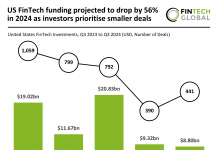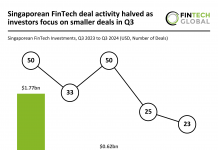Simplicity is the ultimate sophistication, Leonardo da Vinci once said. However, simplicity can be a double-edged sword when digitising wealth management and the key is finding the right balance.
A new blog post from Kidbrooke explores how wealth managers can get simplicity done correctly.
As the world shifts to digital operations, there is becoming a greater need for simplicity with customer experiences. Technology giants like Amazon and Google have shaped how people see online interactions and if processes are too complex, they are unlikely to stick around.
However, Kidbrooke sees simplicity within a digitalisation strategy as leading to both good and bad outcomes.
A good scenario would involve a customer journey that delivers value in a few simple steps, without excessive questionnaires or unnecessary distracting elements. Whereas a bad outcome would derive from simplistic assumptions being made about future assets’ returns and underestimating the investment risk or failing to consider the effect of fees and taxes correctly. Simply put, oversimplifying analytical elements of the financial journeys would be a bad move, Kidbrooke explained.
The need to strike the right balance was something Kidbrooke kept track of when designing its financial simulation engine OutRank. The company picked a realistic scenario-based approach over simplistic models based on Modern Portfolio Theory.
One of the key functions of its OutRank tool is the economic scenario generator (ESG). The ESG models possible future states of the global economy and capital markets to inform a wide range of portfolio and risk management decisions.
In terms of a digital financial journey, the ESG implements a forward-looking and probability-driven perspective to elements affected by financial risk, while considering the institution’s house views. Its granular approach to underlying risk also ensures it can accurately model the future market development of an institution’s product universe.
An important part of the platform is how it can be tailored to each financial institution’s house view or provide them with the consensus of several financial institutions around the world.
The blog post continued, stating some forward-looking algorithms need regular adjustments to function correctly and ensure decision-making is as realistic and accurate.
There are two ways of updating and analysing the performance of ESGs. The first is model calibration, which updates the prediction machine with the latest historical data. This method is largely automated.
The second process is model validation. This involves monitoring the performance of the model, reviewing the ongoing appropriateness of its specification, and testing its results against experience.
Another aspect firms need to be aware of is the need for retaining control over intelligent algorithms that work with data.
It concluded, “Compromising on core technology defining your financial offering is a “bad simple”. Therefore, we suggest that you choose not complex but superior technology to drive your digital solutions. That could be not only a reliable differentiating factor to your brand but also a great strategic choice for enabling further opportunities to innovate.
“Given the right technology, it is possible to give the underlying decision-making tool the soul, the spirit, and the story to match the brand values of your financial institution. And most importantly, suitable models such as those implemented in OutRank are better suited to learn, develop and adapt to your vision as times change.”
To read the full blog, click here.
Kidbrooke recently offered guidance on where wealth managers should start when considering their digitalisation strategies.
Copyright © 2022 FinTech Global 2022











